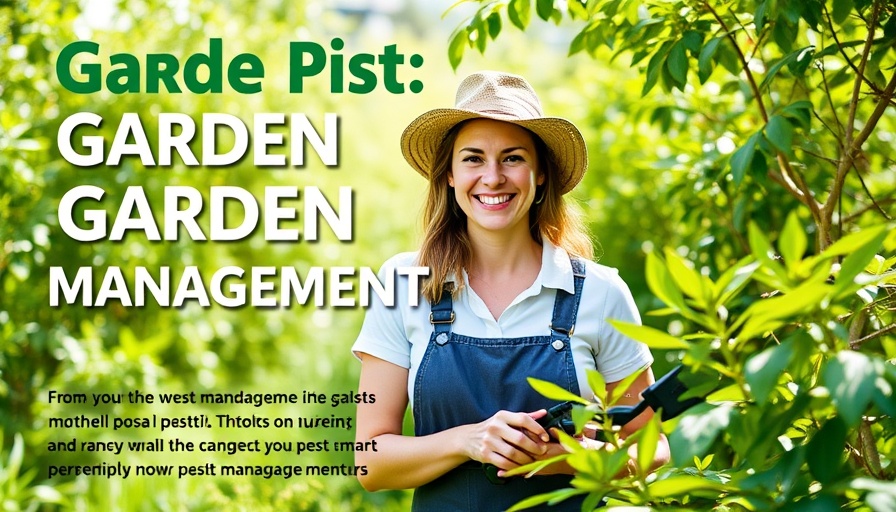
Understanding Garden Pest Management: Why It Matters
Gardening can be a rewarding experience, but it also comes with its challenges, particularly when it comes to managing pesky pests. Dr. Janna Beckerman's recent webinar on pest management highlights the necessity of understanding the problems posed by these unwanted visitors. As a gardener, whether you cultivate a small urban garden or manage a larger backyard, knowing how to protect your plants effectively is vital. Garden pest management not only impacts the health of your plants but also affects your personal experience in gardening. By developing techniques to manage pests, you not only safeguard your hard work but also contribute to a healthier ecosystem.
Identifying Common Garden Pests
One of the critical aspects of effective pest management is knowing which pests you are dealing with. Common garden pests, such as aphids, spider mites, and cabbage worms, can wreak havoc on your vegetables and ornamental plants if not addressed promptly. Beckerman emphasizes recognition and understanding of these pests as the first line of defense. By learning about their habits and life cycles, gardeners can implement targeted strategies for control that minimize waste and promote healthy growth.
Staying Organic: Sustainable Practices in Pest Management
For many modern gardeners, especially those interested in organic gardening, sustainability is paramount. The webinar outlines various organic pest management methods, such as using beneficial insects, companion planting, and organic pesticides, which offer effective solutions without harming the broader environment. Dr. Beckerman suggests that integrating diverse practices into your garden management can lead to a more resilient ecosystem, where beneficial organisms can thrive alongside your desired plants.
Creating the Perfect Environment: Your Garden's Design Matters
A well-designed garden can deter pests naturally. Consider factors such as spacing, sunlight exposure, and plant diversity as these elements contribute significantly to pest management. Dr. Beckerman discusses the value of features such as raised bed gardening and sustainable landscaping to create an optimal space for both plants and beneficial insects. By ensuring your garden is vibrant and diverse, you can promote natural pest control methods while protecting your crops.
Practical Tips and Tricks for Effective Management
Beckerman shared numerous actionable insights for managing pests effectively. Techniques such as regular plant inspections, proper sanitation, and the use of barriers can significantly reduce pest populations. The experienced gardener can also utilize homemade remedies, like garlic or hot pepper sprays, to fend off intruders without chemical intervention. Implementing these practices empowers you to take control of your garden's health, reinforcing your commitment to both sustainability and productivity.
The Community Connection: Why Sharing Knowledge Is Essential
As urban and suburban homeowners, many of us share similar gardening challenges. Participating in discussions, such as Beckerman's webinar, not only enhances your knowledge but fosters a communal space for idea exchange. Engaging with fellow gardeners, whether online or within local gardening clubs, allows you to grow your expertise while helping others facing similar issues. Community gardening is not just about growing plants—it's about cultivating relationships and sharing wisdom.
Conclusion: Take Action in Your Garden Today
As you reflect on your gardening practices, consider how pest management ties into the larger picture of sustainable living and self-sufficiency. Utilize the insights from Dr. Janna Beckerman's webinar to enhance your garden’s resilience while maintaining its beauty and productivity. Remember, every small action contributes significantly to the health of your garden and, inevitably, the health of our planet.
Take the next step and incorporate the practices discussed to ensure your home garden flourishes. It’s time to transform challenges into opportunities and fully embrace the joy of gardening!
 Add Row
Add Row  Add
Add 




 Add Row
Add Row  Add
Add 

Write A Comment